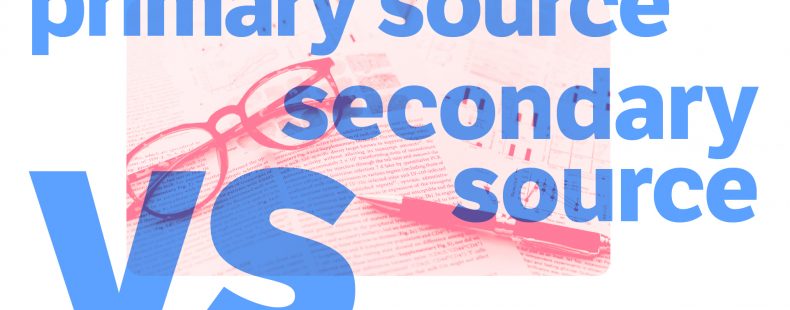If you’re working on a paper that requires interviews or research, you have most likely been asked to include both a primary and a secondary source. While firsthand accounts of events (like the ones primary sources provide) are important to have, a knowledgeable and unbiased interpretation of that account (this is where your secondary source comes in) can lend credibility to your paper.
In most cases, using both types of sources is preferable. That is why it is important to be able to distinguish between the two while doing research, so you can be sure that you have included some of each.
What is a primary source?
The significance of a primary source is in the name itself. The word primary comes from the late Middle English and Latin primarius, which means “of the first rank.” It has been around since 1425–75, and it can mean “very important, first-rate, and leading.”
That being said, it should come as no surprise that a primary source is one that will provide a firsthand account of an event, or the source that is the closest to the event or information you are writing about. People or items that offer a firsthand account of events, raw statistical data, and photographs are all considered primary sources. Diaries, newspaper articles, and speeches are also in this category.
Sometimes, primary sources provide information that needs to be interpreted or explained by researchers or secondary sources.
What is a secondary source?
Just like with a primary source, the significance of the information a secondary source provides is in the name itself.
The word secondary comes from the Middle English and Latin word secundarius. The word secondary did not appear until 1350–1400 (making it the most ironic origin story ever, since that means the word secondary came before the word primary), and it means “one grade or step after the first, not primary” and “below the first in rank.”
Unlike primary sources, secondary sources are not firsthand accounts. Instead, they are documents or experts offering an interpretation of information provided by primary sources. Items like reference books, textbooks, and journal articles are all examples of secondary sources.
How to tell the difference between the two
It may seem easy enough to tell the difference between the source types (one has firsthand knowledge of the topic you are writing about, while the other has secondhand knowledge), but sometimes it can get a little tricky to tell the two apart. Especially when you are dealing with documents or a source who is assigning value to the account they are giving you.
To avoid any confusion, check out this cheat sheet that illustrates some of the major differences between the two types of sources.
Primary source:
- pictures from an event
- like a collection of drawings created in 1947 by schoolchildren who were living less than a half-mile from Hiroshima when the nuclear bomb went off
- a record
- like Abbey Road by the Beatles
- a novel
- like American Dirt by Jeanine Cummins
- an exit poll
- like raw data compiled by the research company Edison Research
Secondary source:
- a documentary about the event
- like Pictures from a Hiroshima Schoolyard which follows schoolchildren as they are reunited with their drawings 70 years later
- a textbook explaining the type of music being played on a record
- like The Complete Beatles Recording Sessions, a book that presents a behind-the-scenes look at the making of Abbey Road
- a published essay analyzing a novel
- like Vox’s “The Controversy Over the New Immigration Novel American Dirt,” as explained by Constance Grady
- an article explaining what the results of an exit poll mean
- like coverage by ABC, CBS, and so on, that breaks down what the results mean for candidates and their campaigns
Keep in mind, that some of these designations are considered subjective. Some types of sources can be categorized as either primary or secondary depending on how they are used.
And yes, in case you’re wondering, a dictionary is a secondary source of information. Happy researching!













